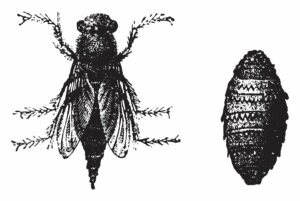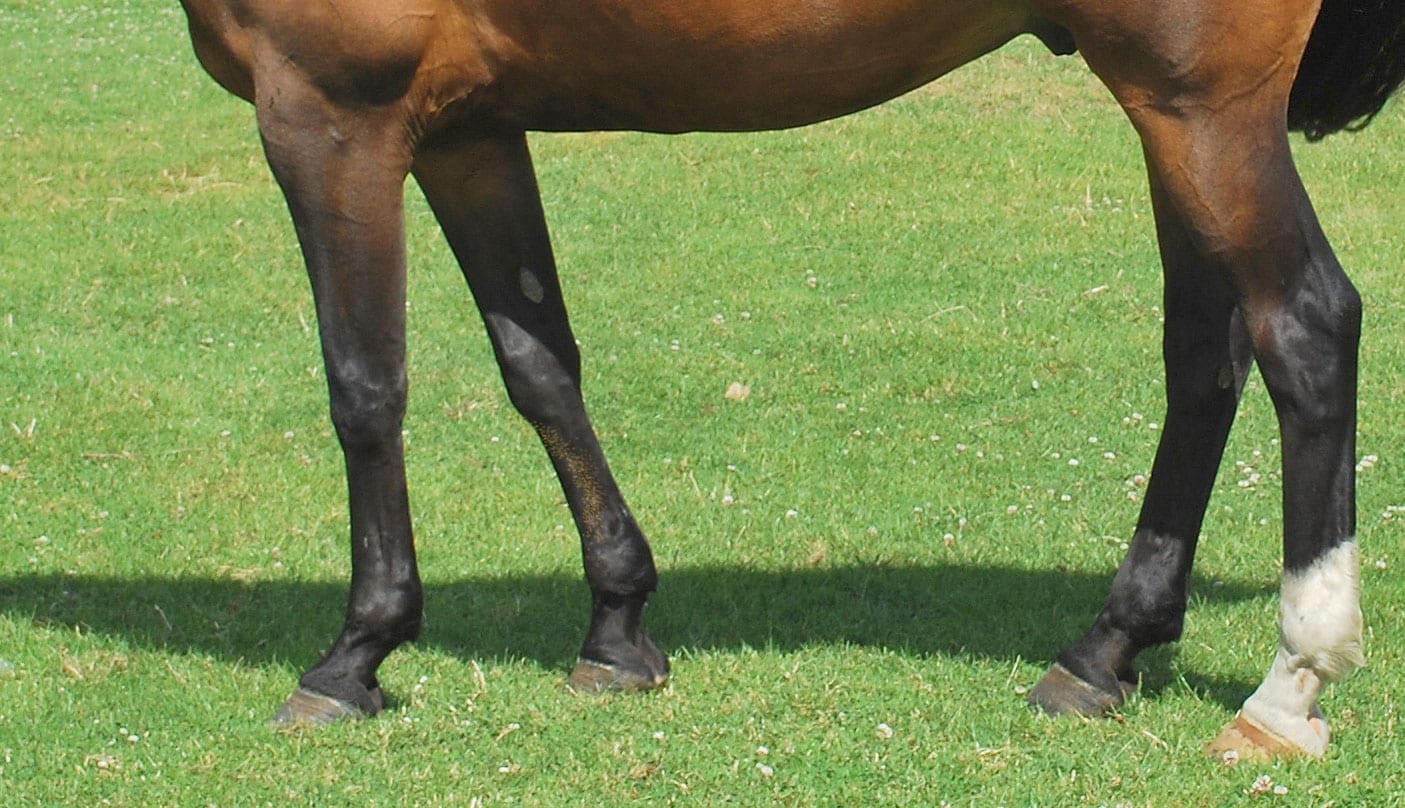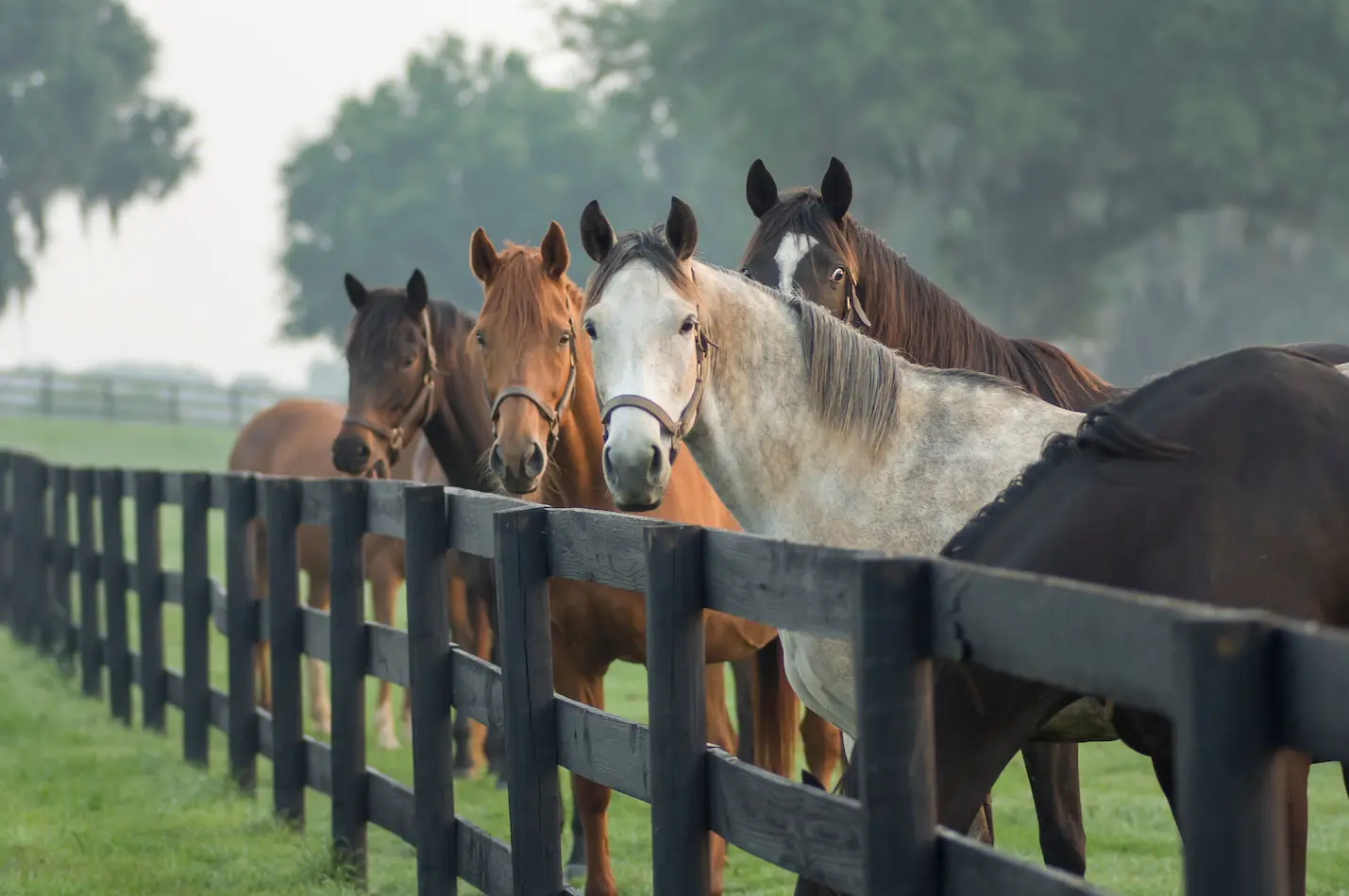Like some kind of alien plotting to take over the world in a sci-fi movie, the female bot fly (or Gasterophilus intestinalis) buzzes around your horse in early spring, depositing between 150 and 1,000 small, yellow-colored eggs on your horse’s legs, neck and around his nose and muzzle. The eggs make their first move within five days of being deposited, when, stimulated by your horse biting or licking them, they hatch into maggots. That’s the first stage of the bot fly’s evil plan.
The second phase is the bodily invasion, when the larvae either crawl to your horse’s mouth or are ingested and subsequently bury themselves in the tongue and gums of the mouth. Then they lie in wait for approximately one month.
The third phase in the bot fly’s nefarious plan is the most dangerous to your horse: the takeover of your horse’s stomach. (In the movies, this is about when you start noticing a character acting strangely. He or she might look and talk about the same, but you just start noticing something that’s a little…off.) The larvae mostly attach to the lining of the stomach in the non-glandular region, or the upper area of the stomach. And then — surprise! — they hatch into one-half to three-quarters-of-an-inch long larvae with narrow, hooked mouths that allow them to attach to the lining of the stomach and intestinal tracts. Once attached, they dig into the stomach tissue and cause all sorts of problems for your horse, who is now officially an alien host for the bot fly for the next 8-10 months. After nearly a year of free rent in your horse’s stomach, the larvae eventually pass in your horse’s manure, pupate in the soil for 3-5 weeks, then emerge as adults ready to start a whole new alien invasion.
Pretty gross, right? But here’s the thing: that whole life-cycle may be disgusting for us to imagine (and seeing the yellow-grey eggs never fails to make a horseperson cringe), but bot flies are also a major risk to your horse’s health.
How Bot Flies Hurt Your Horse’s Health
There are three basic types of gasterophilus
- intestinalis: which lay eggs mostly on the forelegs and shoulders.
- haemorrhoidalis: which lay black eggs on the hairs of horse’s lips, where they can easily crawl to your horse’s mouth.
- nasalis: which lay eggs on the hairs of the jaw or throat-latch region.

All three types follow a similar pattern of hatching, migrating, then attaching to the mucosal lining of the stomach. The only real difference between the three is where they attach. All three can do great damage, beginning with when the bot flies buzz around your horse, trying to lay their eggs, and alarming the horse (and you) in the process. Once they’re ingested, though, the real problems begin, including:
- Dental issues: When the larvae crawl into your horse’s mouth, they hang out there for a bit, burrowing into the gums and causing severe irritation, pus pockets and possibly even loose teeth. Your horse may lose his appetite — or at least his interest in fully chewing his food.
- Sinus infections: Horses may also start discharging mucus from their noses as a response to larvae in their nose and mouth.
- Gastrointestinal issues: When larvae travel to the gastrointestinal tract and attach to the stomach and intestine, problems can result, including swelling, ulceration and discharge at the site of attachment. The general term for irritation and/or inflammation of the stomach lining is gastritis, which is a symptom of an underlying condition — in this case, a bot fly infection, or gasterophilus infection.
- Compromised nutrition: In addition to damaging the tissue of the stomach or gut lining, larvae also consume nutrients that would otherwise be beneficial to your horse, making it harder for him to keep weight on.
- Blockages or colic: Horses may be able to withstand small invasions of larvae, but when large numbers coalesce in the stomach, they can also cause physical blockages. (Remember — these larvae are half-inch to three-quarters-inch long!) These physical blockages can lead to impaction colic.
- Weight loss, lack of appetite, changes in behavior, body condition or hair coat, cribbing or wood chewing, or underperforming: All of these symptoms can be associated with gasterophilus infection.
Diagnosing and Treating Gasterophilus Infection in Horses
The last bullet point above may have you scratching your head, as that laundry list of symptoms could be attributed to a variety of foregut and hindgut conditions. That makes it hard to use those symptoms as a concrete indicator of gasterophilus infection. Complicating things further, there’s no easy way for your vet to definitively diagnose an infection either. Your best diagnostic option is to visually identify larvae in the feces — by which point, your horse has been suffering from an infection for a number of months. Not ideal.
While decreasing the parasitic load is beneficial to your horse, merely getting rid of the parasites won’t help to heal the damage they leave behind in the digestive tract.
If you do suspect a gasterophilus infection in your horse, you can relieve the physical burden caused by their presence with anthelmintics, or dewormers, which will kill the parasites and help your horse flush them from his system.
However, while decreasing the parasitic load is beneficial to your horse, merely getting rid of the parasites won’t help to heal the damage they leave behind in the digestive tract. A fecal blood test can help detect injury from a heavy parasitic load, and can help you better understand the severity of your horse’s infection. Regardless of its severity, the best thing you can do is to take a top-to-bottom approach focused on your horse’s overall digestive wellness.
Digestive wellness can be influenced by the following:
- An appropriate, forage-first diet that supports digestive health.
- A feeding schedule that works in tandem with your horse’s natural digestion process.
- An appropriate diet for his individual needs.
- Digestive support to help him make the most of available nutrients and support good body condition.
Preventing Bot Fly Infection in Horses
Given the high incidence of horses suffering from gasterophilus infections, your best line of defense is to stay on top of your horse’s digestive system health. But you can also take the “prevention is the best cure” route by spraying your horse with insect spray to deter bot flies from landing on your horse, using a fly sheet, and scraping the bot fly eggs off every day with a bot egg knife or grooming stone. (Remember that you only have a few days between when the eggs appear and when they’re prompted to hatch and begin their vicious cycle.) Be aware that bot eggs can also (but rarely) choose a human for a host — so always wash your hands after removing bots, and take care to avoid touching your eyes while scraping the eggs off.
Good pasture management also goes a long way towards cutting down on the bot fly population, among an amalgam of other health benefits. Remove manure regularly from paddocks and pastures and be sure to properly compost manure before spreading it on fields, as that will kill bot fly and other parasite eggs. Check out this helpful fact sheet from the University of Connecticut to learn more about proper manure management for horses.
While dewormers can help get rid of the larvae once they’ve taken hold in your horse’s system, it’s not ideal to wait for an infection, and then treat it.
Finally, a well-planned deworming program is key to controlling bots. Look for brands with ivermectin and moxidectin, which are specifically designed to fight the bot larvae. While dewormers can help get rid of the larvae once they’ve taken hold in your horse’s system, it’s not ideal to wait for an infection, and then treat it. Rather, make bot fly prevention, treatment and eradication a year-round event — and for the best overall result, be sure to do everything you can to help support a healthy digestive system so your horse can help you fight.




